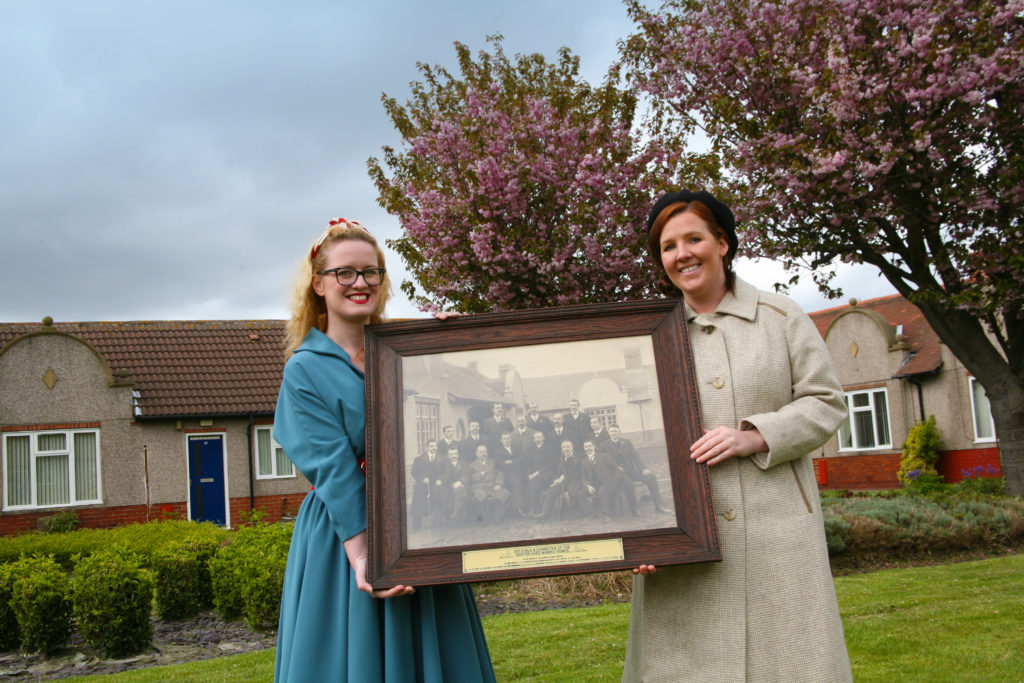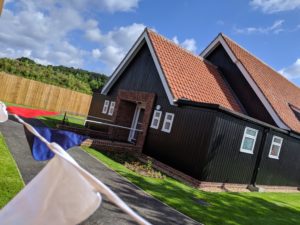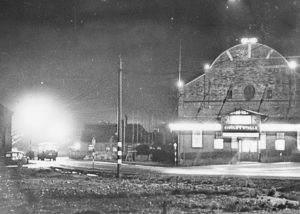Complete
A space for people living with dementia or other long-term health conditions is set to be created in The 1950s Town in a replica of aged miners’ homes.
A terrace of four houses from Marsden Road in South Shields has been chosen to be replicated at the museum as part of the Remaking Beamish project.

Cassie Robson (left) and Hayley Scott from Beamish with a photo of the committee from the original aged miners’ homes.
Visitors to the exhibits will be able to learn about the work of Durham Aged Mineworkers’ Homes Association (DAMHA) and what it was like to live in an aged miner’s home in the 1950s.
Discover what life is like for retirees in the mining industry and see the effects that rising costs of living after the Second World War had on the people. Hear stories about what nationalization of the coal mining industry was like from the perspective of a recently retired mine electrician, and you can also visit the widow next door, assisting in and learning about home help schemes.
The space of two of the replicated homes will host sessions for older people, people living with dementia and other long-term health conditions, and their families and carers. This will build on the acclaimed work Beamish’s Health and Wellbeing Team already does at Orchard Cottage, at The 1940s Farm.
The new 1950s houses will be full of original furniture, objects and music from the 1940s and 50s, which means the museum will be able to work with even more people.
The Marsden Road homes are owned by DAMHA which is working with Beamish on the project. We’re speaking to residents and other community groups to gather their memories of the 1950s.
Aged miners’ homes were some of the earliest forms of social housing to help elderly members of mining communities. The first Marsden Road homes were opened in 1914 and had indoor toilets when they were built, demonstrating the commitment to high quality care that the Aged Miners’ Homes Association had from the outset.
In addition to the new Health and Wellbeing space, the plan is that two of the aged miners’ homes at Beamish will be open to all visitors to help tell the story of life in the 1950s.
The museum usually hosts sessions for older people, including people living with dementia, and their families and carers at Orchard Cottage at The 1940s Farm, with activities ranging from sing-alongs and traditional baking to crafts and gardening.
The museum has been working with a range of organisations on the future plans including local NHS service providers, community and residential care providers, support groups and participants from the group sessions held at Orchard Cottage.
DAMHA was founded in 1898 and grew from the vision of Joseph Hopper, a miner and lay preacher. He believed that a man who had served in the coal mines all his life deserved better than to be evicted from his tied colliery home when he retired.
A small weekly levy voluntarily donated from miners’ wages, plus donations of land and materials from mine owners and others, allowed the homes to be constructed and let free of charge.
The first Marsden Road Aged Miners’ Homes were opened in 1914. DAMHA has provided Beamish with plans, a blue-print of the homes in their original context and a photograph of the official committee.
DAMHA is one of the largest, and the oldest, Almshouse charities in the country. It has about 1,700 homes on 130 sites in 80 villages, providing retirement housing for more than 2,000 North East residents. It has a residential home, sheltered accommodation and leasehold schemes for the elderly.
Traditionally, the association has provided homes for mineworkers, but now anyone over the age of 50 can apply. It mainly operates in the former Durham Coalfield, including County Durham, Gateshead, South Tyneside and Sunderland.
Related Exhibits
Leasingthorne Colliery Welfare Hall and Community Centre

Our welfare hall was the first building to open in The 1950s Town!
Read morePolice Houses

A pair of police houses from Heworth, Gateshead, and their associated single-storey office, have been replicated at Beamish.
Read moreThe Grand Cinema

Lights, camera, action – The Grand will give visitors the chance to experience a trip to the cinema during the 1950s.
Read more